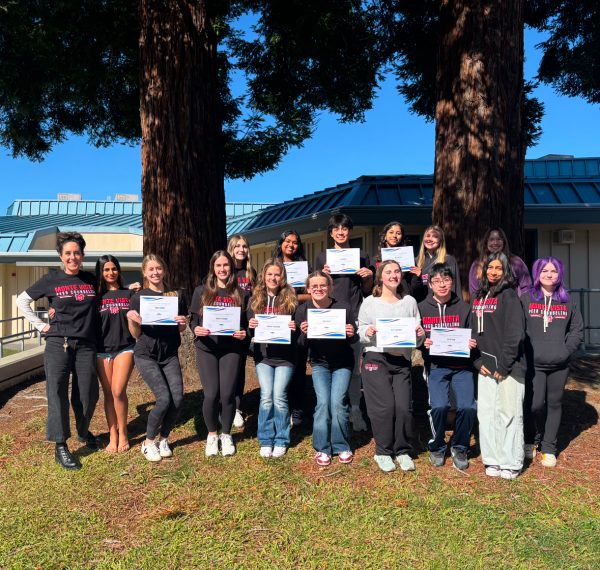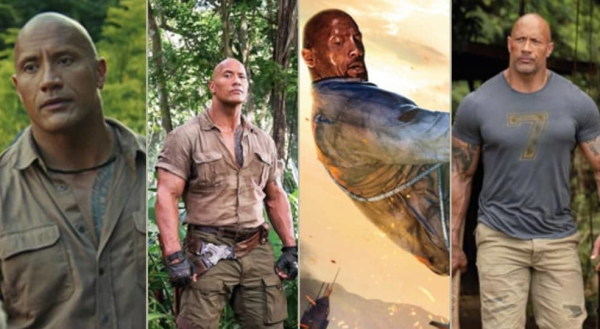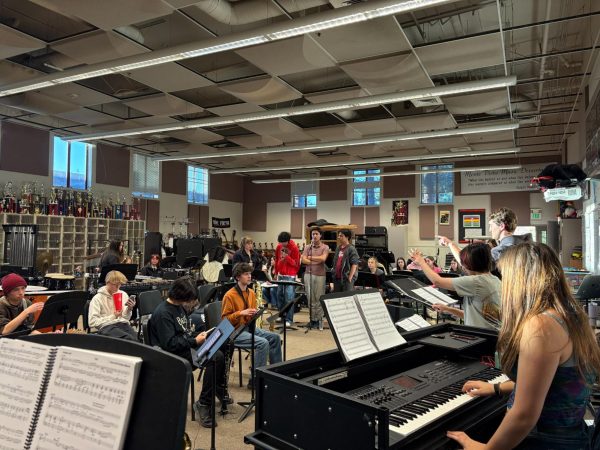Fast fashion- but at what cost?

Monte Vista freshman, Vikram Bhandari, is shopping fast fashion at H&M. Fast fashion companies offer trendy pieces at affordable prices to attract customers, including Bhandari, but at the expense of others and the environment.
“Free shipping! Coupons available! Today only!” These magic words motivate consumers to buy from the multi-billion dollar fast fashion industry.
Affordable prices and the desire to be “trendy” are what make fast fashion clothing so appealing to young adults. Shein is an example of a fast fashion company that sells the same trendy clothing as other stores, but at significantly lower prices.
In addition to affordability and relevance, the organization of the Shein website incentivizes customers to buy and market its products. For example, when customers check-in each day and/or leave reviews after each purchase, they are rewarded with points that can be used towards future purchases. This motivates people to promote and continue shopping at Shein.
The company also has a large social media presence that helps boost its name recognition. On TikTok, Shein has quickly gained popularity because content creators post “Shein try-on hauls” that promote the company and encourage people to buy fast fashion clothing in bulk.
There are thousands of fast fashion items accessible to customers. Writer Yvonne Lau of Fortune magazine said that every 24 hours, 6,000+ more items are added to the Shein website. The constant availability of new, trendy clothing is appealing to customers.
“If I’m buying online, most times [I’ll shop] in bulk because all the stuff is listed there, so I just add it to [my] cart,” said Ava Pulsifer, a senior at Monte Vista. “But in person, I usually just buy one or two items, like a shirt or jeans.”
Because so many people shop in bulk, there is a high demand for clothing, so fast fashion companies cut costs by using cheaper materials that are harmful to the environment. The Canadian Broadcasting Corporation conducted an investigation of Shein in 2021 and found dangerously high amounts of lead in their clothing. According to the Centers for Disease Control and Prevention (CDC), people, particularly children, are more likely to suffer damage to their brain and nervous system as a result.
In contrast, there are companies that produce clothing made of safe and sustainable materials that do not contain dangerous amounts of lead, but it is more expensive. Riley Perkins, a junior at Monte Vista, avoids spending large amounts of money on sustainable clothing and instead finds cheaper alternatives, such as fast fashion.
“Some sustainable companies [charge] $50 to $75 for one item of clothing,” Perkins said. “It doesn’t make sense for me as someone who doesn’t have an actual income to try and buy sustainably because there’s no way I can actually support it.”
Millions of consumers gravitate towards fast fashion for this reason. To sustain business, fast fashion companies minimize costs by using cheap labor. But this results in the exploitation of minors in certain countries, such as Bangladesh, Mexico, and China.
The Humanium, an international child sponsorship, said that children can work as long as 14-16 hours a day. They are required to pick cotton, which exposes them to harmful chemicals. It is difficult for children to leave these harsh working conditions because they often come from poor families and are uneducated.
There is no easy solution for child labor, but smaller actions can be taken to improve the status quo. Some students at Monte Vista, including freshman Lyla MacDonald, have discovered thrift shopping as an alternative. MacDonald started thrifting after learning more about it on TikTok.
“I like thrifting because you can always find some really cool, cheap [clothes],” MacDonald said. “And I like how it’s second hand, so you’re reusing [clothes].”
Thrifting and recycling clothes have simultaneously gained popularity along with shopping fast fashion. Buying used clothes was traditionally frowned upon by society, but with the help of social media, it is now considered to be trendy.
People also thrift for the unique selection of clothing. Eddi Peavler, a freshman at Monte Vista, appreciates the authenticity of thrifting and how sustainable it is.
“[Thrifting] lets you create your own individuality… [and] you can feel that the owner specifically chose the outfit and clothes that they’re selling,” Peavler said. “You can spend an hour [at the thrift store] and maybe get ten things, but they’re ten things that you’ll wear forever.”
One individual cannot single-handedly stop child labor and excessive clothing waste, but smaller actions can be taken to help while still achieving the goal of finding trendy clothing at affordable prices. One trip to a thrift shop instead of to a fast fashion store makes an impact.
“Maybe when our generation gets older and starts realizing that fast fashion is really bad, they’ll turn to thrifting because it’s cheap and you get to look like your own person,” Peavler said. “ I think [thrifting] will get more popular.”

Alexa Fo is the news editor and a junior at Monte Vista. She was the feature editor for The Stampede...






